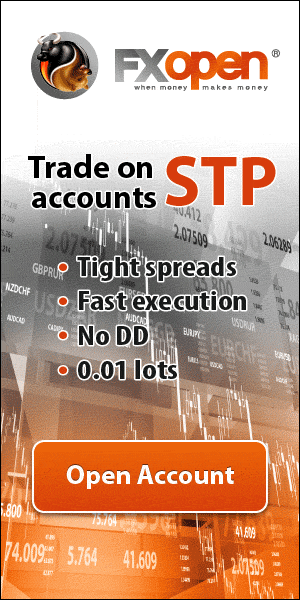How Price Alerts, DEX Aggregators, and Trading Volume Tell the Real Story in DeFi
Mid-trade, your gut can be the difference between bagging a win or watching it evaporate. Seriously—I’ve been there, staring at a candlestick that made no sense until a volume spike and a routing change explained the whole mess. The crypto market throws signals fast. If you’re not set up to catch them, you’re basically trading blind.
Here’s the thing. Price alerts are not just for convenience; they’re your early-warning system. A well-tuned alert will tell you when something fundamental changes: liquidity shifts, trading volume surges, or an aggregator finds a cheaper route that hints at arbitrage or bot activity. But alerts alone aren’t enough. You need context—where the trade is routing, the pool sizes, and whether the activity is local to one DEX or systemic across several.
Let me break it down in plain terms: price alerts notify, DEX aggregators explain, and trading volume validates. When those three line up, you get a meaningful signal. When they don’t, that’s a red flag too—sometimes the absence of volume matters as much as its presence.

Why alerts matter (and how to avoid noise)
Alerts are cheap to set up and expensive not to. But spammy alerts damage your edge. Too many triggers and you stop reacting. So, tailor them. Use tiered thresholds: a soft alert at 3–5% for watching, a hard alert at 10–15% for action. Combine price moves with volume filters—an x% price move on 10x average volume is different than the same move on 0.1x.
My practical checklist for alerts:
- Price change percentage + timeframe (e.g., 8% / 10min)
- Volume multiplier vs. moving average (e.g., 4x 30-min MA)
- Liquidity depth or slippage threshold for the pair
- Aggregator routing changes (is the cheapest path shifting?)
When you combine these, alerts become filters rather than noise-makers. Oh, and by the way—if you’re juggling multiple chains and token versions, label alerts clearly. Trust me: one wrong alert in the wrong chain can cost you fees and sleep.
DEX aggregators: why they deserve your attention
Aggregators do two big things: they find the best price across liquidity sources, and they reveal market structure. If an aggregator suddenly routes through six pools instead of one, that’s telling you liquidity is fragmented or being manipulated. If most volume for a token funnels to one obscure pool, that pool could be a honeypot or a staging ground for frontrunning bots.
Use aggregators to:
- Estimate true market depth beyond the top-of-book
- Detect routing changes that indicate bot activity or arbitrage
- Compare quoted slippage vs. expected slippage to spot low-liquidity traps
And here’s a practical tip: don’t blindly accept the aggregator’s “best” route if slippage or gas costs make it uneconomical for your trade size. Check the route breakdown. Some aggregators will show you hop-by-hop impact; others hide it behind a summary. Demand transparency—you’re paying for that insight.
If you want a reliable way to track routes, prices, and alerts in one place, check this tool out — it’s helped me monitor cross-DEX routing and price action when I needed a second pair of eyes: here.
Trading volume: the difference between noise and conviction
Volume is the grounding truth of a price move. Low-volume pumps are fragile; high-volume moves are heavier, often driven by institutional flows, OTC fills, or coordinated liquidity shifts. But volume can be misleading—wash trading, self-trading, and single-bot sweep activity can inflate on-chain volume without real economic interest.
So measure volume contextually:
- Compare on-chain volume to CEX volumes and historical norms
- Look at the number of unique wallets involved, not just total tokens
- Check if volume correlates with liquidity changes (add/remove liquidity events)
High volume + routing concentration = potential manipulation or MEV opportunity. High volume + distributed liquidity across reputable pools = stronger signal of genuine demand. Either way, pair volume analysis with alerts and aggregator routing to avoid being the wrong-side-of-a-tactic.
Putting it into practice: a simple workflow
Okay, so here’s a workflow I actually use. It’s not perfect but it’s practical:
- Set a composite alert: price delta + volume multiplier + slippage bound.
- On alert, open your DEX aggregator view and inspect route hops and pool sizes.
- Check how many addresses participated in the spike and whether liquidity was added/removed.
- Decide: execute a scaled entry, set a limit order, or wait for confirmation on a time-based moving average.
Something I always remind newer traders: your order execution plan matters. Use split orders or TWAP execution for large entries. If the aggregator suggests a multi-hop route with tiny pools, that route might be susceptible to sandwich attacks. In those cases, you might pay more in slippage or be front-run—both suck.
FAQ
How many alerts are too many?
Quality over quantity. Start with 3–5 critical alerts: major holdings, watchlist tokens, and cross-chain bridges. Expand only if each new alert changes a decision you make at least once a week.
Can DEX aggregators be trusted for execution?
Aggregators are tools, not guarantees. They find routes; they don’t prevent MEV or guarantee fill quality. Always review route transparency and factor in gas and on-chain risks when executing.
How do I tell real volume from wash trading?
Look beyond totals: wallet counts, average trade size, and correlation with liquidity changes. If volume spikes but unique participants don’t, treat that volume with skepticism.






